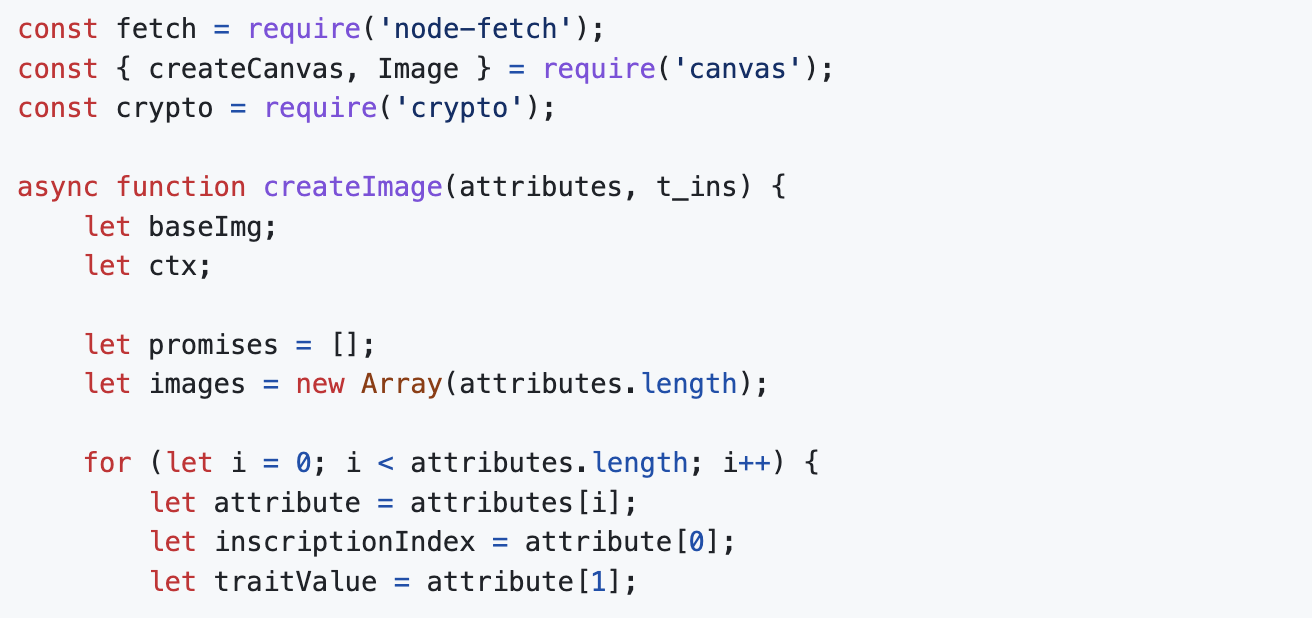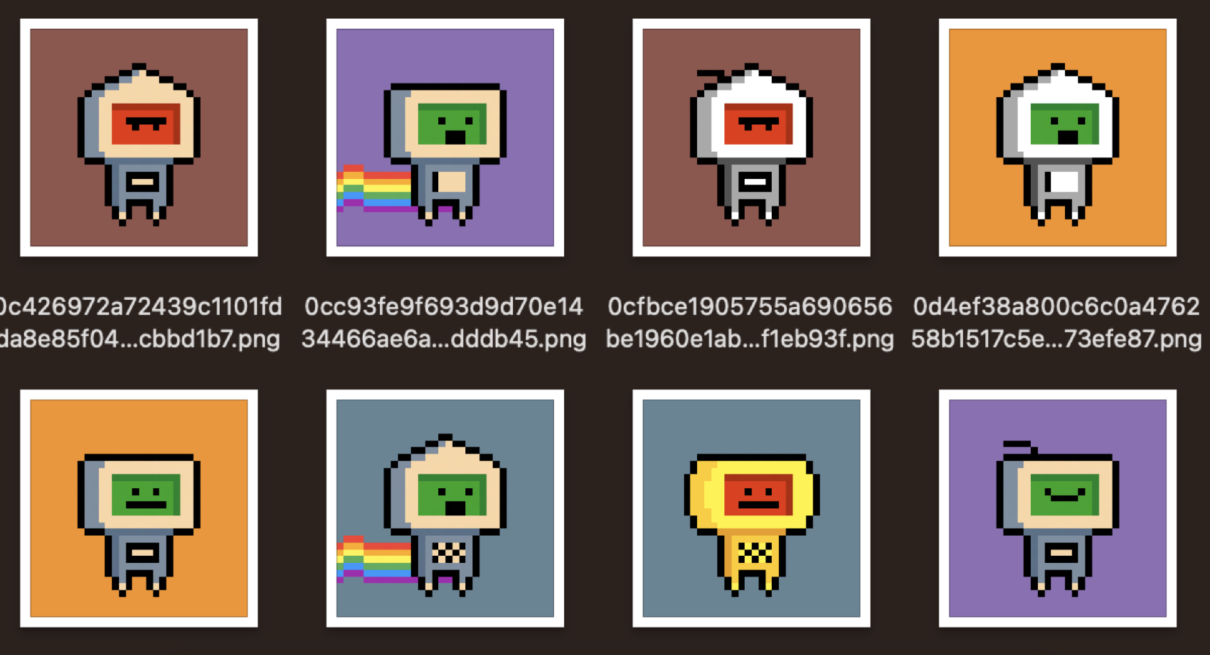Explaining the GBRC721 protocol and its ecosystem projects that have been boosted by OrdiBots’ thousand-fold increase
Explaining the GBRC721 protocol and its ecosystem projects, boosted by OrdiBots' significant increase.Author: Wuhai, BlockingNews
On May 30th, according to Dune data, the total amount of inscriptions cast by the Bitcoin NFT protocol Ordinals exceeded 10 million, with a cumulative fee income of 1578.4611 BTC, worth $44.14 million. Looking back at its brief development history, since software engineer Casey Rodarmor officially launched the NFT protocol “Ordinals” on the Bitcoin mainnet on January 30th, the number of inscriptions cast on the Bitcoin chain exceeded one million in early April, and in less than two months, it has grown tenfold. It can be seen that the speed of development and the scale expansion of the ecosystem based on the Ordinals protocol are extremely fast.
The intuitive impact of the increasing number of inscriptions being cast is that the Bitcoin network fees are soaring and stabilizing at higher levels, and a large number of creators are entering the Bitcoin Ordinals ecosystem, which further intensifies the community’s demand for Bitcoin block space. Based on this, developers are continuously launching new protocols or standards, seeking to solve or optimize the current pain points. Among them, the most eye-catching one in the market is GBRC721. This article by BlockingNews will give you a detailed introduction to the GBRC721 protocol and its ecosystem projects.
What is GBRC721?
The full name of the GBRC721 protocol is generative-brc-721, and the founder is Jerry (Twitter account @0xJerry543), who is also the initiator of the Bitcoin NFT project DogePunks. According to the GBRC721 protocol document, it can save all on-chain resources while achieving 50%-90% block space optimization, thus accommodating more creators and promoting innovation. At the same time, it solves the problem of projects having to choose IPFS off-chain storage, making NFTs on the Bitcoin chain fully chain-stored. This solution also no longer relies on third-party retrieval support.
- What are the backgrounds of these 27 projects that received investments from top crypto VCs in April?
- Listing 5 Catalyst Projects / Narrative: Level Finance, Metavault, Lybra Finance…
- Hong Kong’s new crypto policy is about to take effect. Here are 6 crypto projects worth investing in:
As it is adopted by more people and more platforms are connected, the GBRC721 protocol’s front-end interface displays the actual image generated by the inscriptions cast, rather than text data. Currently, it can be seamlessly completed by scanning the “gen-brc-721” inscription of the user text inscription. Then the on-chain data can be used to regenerate the image and subsequently stored in its system infrastructure, which is similar to the current popular method.

The deployment and inscription process of this protocol is roughly the same as that of BRC20 tokens, including three main operations: 1) use the deployment operation to create a generative BRC721 collection, and the deployment operation is aimed at a JSON/Text inscription, which contains general information about the collection, as well as base64-encoded data that constitutes the collection’s features. Multiple deployment inscriptions can also be created for the same collection, each of which will store a different set of features. 2) Cast an irreplaceable serial number using a JSON or text inscription. 3) Transfer the non-fungible Ordinal to the standard serial number inscription.
The difference is that each collection has uniqueness, but it cannot be checked for duplication before the block is confirmed, which may cause a collection to be engraved by many people, resulting in users spending costs but gaining nothing. Based on this, in order to further optimize the community experience and ensure fair distribution, Jerry said he is considering incorporating an on-chain whitelist. This will require adding an optional new key to the deployment of the inscription, which will point to a separate inscription containing whitelist details for claiming NFTs. This will provide a more manageable and fair distribution system for the collections on GBRC721, preventing unfairness caused by technology and other reasons.
According to Dune data, the GBRC721 ecosystem currently has more than 10,000 transactions, spending a total of 1.68 BTC, and its ecological projects are constantly being launched. The following will introduce the most typical projects in its ecology.
OrdiBots
OrdiBots is a case presented by Jerry to the community in the form of an example when launching the GBRC721 standard, similar to Domo issuing ordi when launching the brc20 protocol. OrdiBots is a very “light” collection, which increases its efficiency by adding combinations generated by more complex special tags.
OrdiBots is a collection of 1,000 images composed of 26 different features. The total size of 1,000 OrdiBots images is approximately 663kb. Calculated at a network fee of approximately 30 sats/vB when engraved, the size of engraving the entire collection is 0.293 BTC (approximately US$7,900). Through the GBRC721 standard, the size of the entire collection is reduced to 294kb (10kb+284kb), reducing the total block space by approximately 55%.

OrdiBots was engraved from May 22nd to 23rd. As the first project under the innovative GBRC721 standard, it received enough attention and funding in the early stage. Currently, the total transaction volume of Ordinals Wallet and Magiceden platform is 26.8 BTC. The current number of items on the Ordinals Wallet platform is 65, and the number of items on the Magiceden platform is 82. There are 350 holding addresses.
At that time, the engraved price of OrdiBots was about US$3. With the continuous attention of the market, its floor price rose to a high of 0.12 BTC, currently equivalent to US$3,200, an increase of 1,000 times. According to market data from Ordinals Wallet, the highest selling price of its blocking equipment is 0.175 BTC. The current market value of OrdiBots is 77.7 BTC, equivalent to US$2.1 million. Based on the Ordinals protocol, the current leader of NFT collections is Bitcoin Frogs, with a market value of US$25.6 million. It can be seen that whether OrdiBots based on the new standard can reach a higher level in development space remains to be seen.
Furthermore, it is not difficult to discover that OrdiBots can achieve such a high multiple of increase. Apart from its innovative standards, it is inseparable from the strong consensus of its community holders. It has gained a lot of publicity by auctioning gold equipment every day and distributing the auction proceeds to the community. At the same time, community members spontaneously developed tools such as rarity queries and holding rankings, and actively interacted with other projects in the platform and ecology, thus empowering holders.
OrdiBlocks
OrdiBlocks was launched by @FioYclub, the manager of DogePunks, and was engraved on May 29th with a total of 666 pieces. Because the rise of OrdiBots led to extreme FOMO of OrdiBlocks in the community, according to searches, each collection of OrdiBlocks has been engraved 4-5 times or more.
After the engraving was completed, the cost of OrdiBlocks rose from $3 to $400, and now it has fallen to $90. The total transaction volume is currently $60,000, with only 223 holding addresses and 105 listings. Its community is also actively operating and interacting in order to bring more benefits to holders.

Summary
GBRC721 has attracted much attention due to the extremely high multiple increase of its first project OrdiBots, but the current ecological infrastructure still needs to be gradually improved. For example, Magic Eden currently does not support the actual image display of inscriptions under the GBRC721 standard. Ecological projects also need to continuously establish and expand consensus under the attention of high emotions in the community, to avoid a fleeting wave.
From the perspective of the larger Ordinals protocol, in just four months, the Bitcoin ecology has gone from being rarely sought after to being extremely concerned by the market, fearing to miss any information. Especially, people’s FOMO for investing in Bitcoin ecology projects seems to have returned to the DeFi summer of 2020. Developers are also constantly launching new protocols or standards to solve current difficulties or constraints.
Of course, there are users in the community who are skeptical of application development projects running on Bitcoin, and there are also observers who are biased against the current phenomenon. However, the current Web3 circle or coin circle is still in the stage of making concepts and telling stories. In the last cycle, the market mainly told stories about DeFi, DAO, Gamefi, and other topics around the EVM chain ecology. Now, it is almost at the end of its rope. The Ordinals protocol has opened up a new channel for the current market constraints, switching to a track that the market has never explored or has not successfully explored before may achieve the effect of a bright future.
We will continue to update Blocking; if you have any questions or suggestions, please contact us!
Was this article helpful?
93 out of 132 found this helpful
Related articles
- How can blockchain projects legally raise funds?
- Quickly review 5 LSDFi projects worth paying attention to recently: Swell, unshETH, Pendle, Gravita Protocol, and Blockingrallax Finance.
- Is it worth buying The Llamas, an NFT project in the Curve ecosystem?
- Will the next bull market bring about cryptographic projects that surpass Bitcoin and Ethereum?
- How does Hourglass tokenize “opportunity cost” when time is money?
- Analysis of the Jimbos Protocol Attack: Was the Project that Brother Maji Invested in Hacked?
- What is Polyhedra, the cross-chain project that everyone is talking about recently? This article explains in detail the differences between it and L0.






